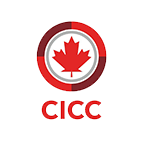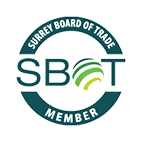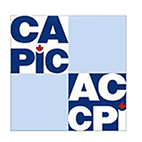“What mistakes should I avoid while applying for the Canadian Spousal Visa?”
Many Canadians choose to marry overseas and establish cross-border partnerships. Some find their partners while travelling the world for business or pleasure. Meanwhile, others form a bond with foreign citizens living temporarily in Canada and have destination weddings in their spouse’s home country.
Canada’s Spousal Sponsorship Program allows Canadian citizens and permanent residents to sponsor their foreign spouses or partners for immigration. Although this program offers a quick and effective way to bring loved ones together, the application process isn’t always straightforward.
Reuniting with foreign spouses in the Great White North can be a complex journey, and making mistakes during the spousal sponsorship application process can lead to delays, rejections, and unnecessary stress.
In this comprehensive guide, we will walk you through the top common mistakes to avoid, ensuring a smoother and more successful application process for you and your spouse. The last thing you want is a spousal visa refusal. So, use the information below and do your due diligence before applying:
Mistake 1: Insufficient Relationship Documentation
The most common mistake many married couples make when applying for spousal sponsorship in Canada is submitting incomplete or insufficient documentation. To prove your relationship, you must provide comprehensive evidence, including (but not limited to):
- Marriage certificate
- Wedding photos or photos together
- Communication records
- Travel Itineraries
- Joint bank statements or lease agreements
- Joint memberships or common association (organization, university, club, etc.)
In addition to the documents, you must carefully draft your Canada relationship letter for your spouse’s visa, explaining how you met, your relationship experiences, and your plans or goals.
Document Checklist for Canada’s Outland Spousal Sponsorship
Mistake 2: Incomplete or Incorrect Forms
Another common Canada spousal sponsorship mistake is filling out the wrong application form or answering questions incorrectly. Both cases lead to unnecessary complications, including visa refusal, prompting couples to file a Canada spouse visa refusal appeal. To avoid this issue (and others), ensure you fill out the latest and correct application forms provided by Immigration, Refugees and Citizenship Canada (IRCC), including:
- IMM 1344 (Application to Sponsor, Sponsorship Agreement, and Undertaking
- IMM 1344A (Spousal Sponsorship Document Checklist)
- IMM 5532 (Relationship Information and Sponsorship Evaluation)
- IMM 5534 (Document Checklist – Spouse (Including Dependent Children) or Common-law Partner), etc.
Mistake 3: Neglecting Medical and Criminal Clearance
Medical exams and police clearance certificates are crucial documents in Canada Spousal Sponsorship applications. When applying for a spousal visa, you must undergo the necessary tests for a registered facility and provide reports. You should also be open about any criminal history, as withholding such information can lead to visa refusal.

Apply for Canada Spousal Sponsorship Program
Mistake 4: Financial Ineligibility
Canada has strict minimum income requirements to ensure you can financially support your spouse when they arrive in Canada. Failing to meet these requirements or providing insufficient evidence to prove financial stability can result in spousal visa refusal. So, when filing the Canada Spousal Sponsorship application, ensure you gather and provide all necessary documents, including:
- Bank statements for the last 3-6 months
- Tax returns
- Employment letter, etc.
Mistake 5: Missing Deadlines
Meeting deadlines can often be the difference between visa approval or rejection. Hence, you should submit your application within the specified timeframes to reduce the risk of delays of refusal. Plan proactively and prepare all essential documents beforehand.
Mistake 6: Lack of Communication
Communication is paramount to the sponsorship application process. Ensure all the information you provide in forms and through documents aligns with your interview consistently. The last thing you want is inconsistencies in your application, such as:
- Employment history inaccuracies
- Conflicting financial details
- Varying interview responses
These issues (and others) can raise unnecessary doubts about the authenticity of your relationship.
Mistake 7: Overlooking Legal Assistance
Spousal visa applications are complex legal processes that often require professional intervention from experts, such as immigration lawyers and registered Canadian immigration consultants (RCIC). Overlooking legal assistance is one of the most common mistakes applicants make, leading to refusal. These experts can provide personalized guidance, prepare error-free applications, and help you with interviews.
Mistake 8: Failure to Update Information
The Canada spousal sponsorship application is a long process. During this time, it’s quite common for applicants’ circumstances to change, including their location in Canada, employment status, health, etc. These changes can lead to complications if you don’t update your information throughout the process.

Bring Your Partner to Canada through Spouse Visa
Need help?
In conclusion, applying for Canada Spousal Sponsorship is a significant step towards reuniting with your loved one in Canada. However, it’s an essential step towards reuniting with your partner and building a life together in the Great White North. Don’t take the process lightly if you’re planning to bring your spouse to Canada. The eight common Canadian spousal sponsorship mistakes above are pitfalls that many applicants fall into. You must avoid them at all costs. One way to do that is to seek expert help.
Elaar Immigration is a leading immigration firm in Canada. Our team of regulated Canadian immigration consultants can guide you through the complex spousal sponsorship process, from filling out the application to preparing documents and simulating interviews. Contact us today, and let us help you reunite with your partner.
Useful Links:










